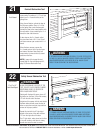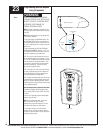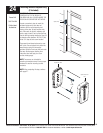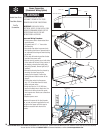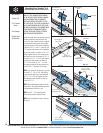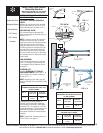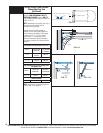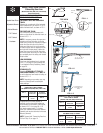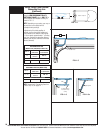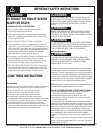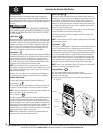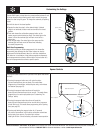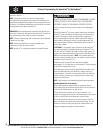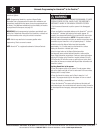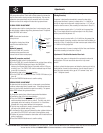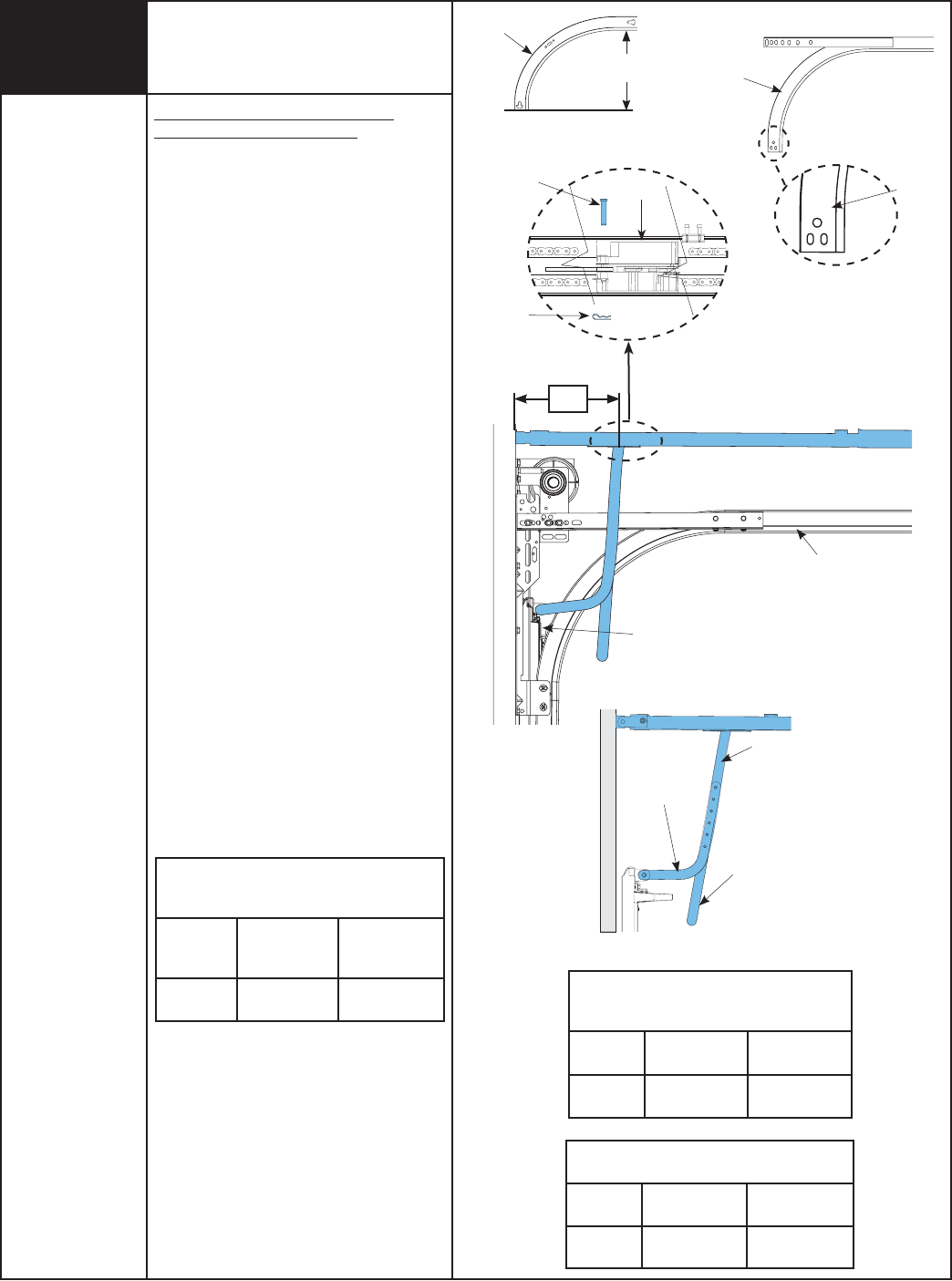
Please Do Not Return This Product To The Store. Call Us Directly! Our Trained Technicians Will Answer Your Questions and/or Ship Any Parts You May Need
You can reach us Toll Free at 1-888-827-3667 for Consumer Assistance or online at www.wayne-dalton.com
25
DETERMINE THE WAYNE-DALTON
TRACK RADIUS BEING USED:
FOR MOUNT HOPE AND PENSACOLA
TRACK:
Measure the curved ends of the horizontal
track to determine if you have a 12” or 15”
radius horizontal track, as shown in FIG. 1.
FOR PORTLAND TRACK:
The horizontal tracks are stamped with
radius on the side of the horizontal track, as
shown in FIG. 1.1.
NOTE: If necessary, remove the upper arm
(straight arm) from the trolley, to use the
lower arm (curved arm). Remove the hairpin
cotter from the clevis pin at the front of
trolley and slide clevis pin out far enough
to slide the upper arm out between the left
and right side of trolley body. Position the
lower door arm so the end with the single
hole lines up with the clevis pin. Slide clevis
pin completely back into trolley and reinstall
hairpin cotter.
LOW HEADROOM:
If you have low headroom track, as shown
in FIG. 1.5 on page 26, then proceed with
“Low Headroom Trolley Positioning Charts”
on page 26.
STANDARD LIFT:
Using the STANDARD LIFT TROLLEY
POSITIONING CHARTS, refer to DIM “X”
to set the distance from header to trolley, as
shown in FIG. 1.2.
NOTE: Depending on your setup, you may
have to cut straight arm to accomplish
trolley settings.
If adjustment of the trolley position is
required, use the close travel adjustment
screw located on the bottom of the opener,
as shown in FIG 1.4 on page 26. A 1/4
turn equals approximately 1” of trolley
travel; turn clockwise to decrease distance
(forward) and counter-clockwise to increase
distance (forward).
NOTE: Proceed with “Connecting Door Arm
To Door” Step 18, on page 14.
Cut Straight Arm To
Accomplish Trolley
Setting
Curved
Arm
Straight Arm
FIG. 1.3
STANDARD LIFT TROLLEY POSITIONING
CHART FOR 10” AND 12” RADIUS
FOR (MODELS 9100, 9400, 9600, 5120 & 5140)
DIM “X”
TYPE OF ARM
BEING USED
REFERENCE
ILLUSTRATIONS
11 1/2”-13”
STRAIGHT /
CURVED
FIG. 1.3
STANDARD LIFT TROLLEY POSITIONING CHART
FOR 14” AND 15” RADIUS
(MODELS 9100, 9400, 9600, 5120 & 5140)
DIM “X”
TYPE OF ARM
BEING USED
REFERENCE
ILLUSTRATIONS
10”-12”
STRAIGHT /
CURVED
FIG. 1.3
STANDARD LIFT TROLLEY POSITIONING CHART
FOR (MODEL 9700) 15” RADIUS
DIM “X”
TYPE OF ARM
BEING USED
REFERENCE
ILLUSTRATIONS
11 1/16”-
16 7/8”
STRAIGHT /
CURVED
FIG. 1.3
Setting Trolley Close Position/
Connecting Door Arm
(Models 9100, 9400, 9600, 5120, 5140 & 9700)
With Torsion Springs
FIG. 1
Horizontal
Track
12” OR 15”
FIG. 1.2
Top Section
10”, 12”, 14”, OR 15”
Standard Lift Track
“X”
Clevis Pin
Hairpin Cotter
Trolley
12”
Stamped
Radius
12”
FIG. 1.1
Horizontal
Track
TOP VIEW
Tools Needed:
Needle Nose Pliers
Adjustable Wrench
Ratchet Wrench
7/16” Socket
9/16” Socket
Hacksaw
I



